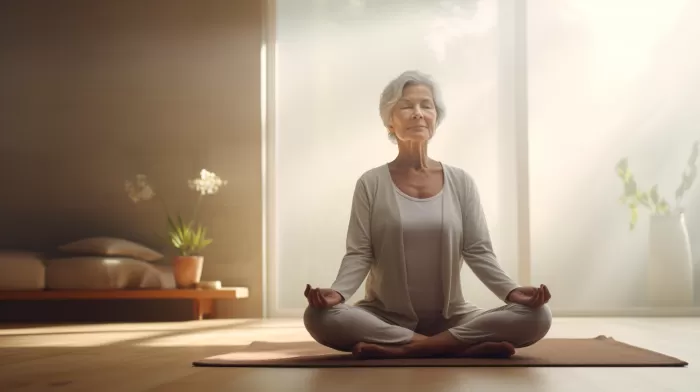Do you want a stronger, firmer body and a bigger brain? Then it’s time to give yoga a try. Research proves that yoga is not only great for reshaping your body, but it can also reshape your brain, improving mental function and staving off brain shrinkage.
A thicker brain with age
Our brain’s left prefrontal cortex is responsible for important mental functions such as learning and memory. As we age, our prefrontal cortex naturally becomes thinner, especially after the age of 60. Fortunately, a recent study out of Brazil discovered that women over 60 who regularly practiced yoga maintained a youthful thickness in their prefrontal cortexes as compared to non-yoga practitioners. This suggests a correlation between regular yoga practice and brain health, protecting us from age-related cognitive decline.
Yoga’s benefits on brain health can be attributed to its contemplative component, which trains our body and mind. Elisa Kozasa, a researcher at Hospital Israelita Albert Einstein in São Paulo, Brazil, says, “In the same way as muscles, the brain develops through training… Like any contemplative practice, yoga has a cognitive component in which attention and concentration are important.”
Yoga offers powerful brain benefits
Previous research backs up the idea that there’s something unique about yoga’s impact on our brains. Other studies have shown that yoga improves awareness, attention, and memory, often performing better than other aerobic exercises. Regular practice of yoga has even been shown to improve cognitive function in older adults with mild cognitive impairment, which is considered a precursor to dementia.
Starting your yoga journey
So, how do you go about incorporating yoga into your life and start reaping its brain-boosting benefits? For beginners, it’s ideal to start taking classes with a professionally trained teacher. Many yoga studios, community colleges, or park districts offer beginner-friendly classes. This will help you learn proper alignment, postures, and breathing techniques.
Once you’ve grasped the basics, you can transition to an at-home practice if you prefer. There are plenty of free yoga videos available on YouTube to guide you through your practice, or you can check out high-quality yoga resources from trusted organizations like Yoga Alliance.
Variety is key
Yoga encompasses many different styles and practices, so it’s essential to find the one that resonates with you. Here’s a quick summary of some popular yoga styles:
- Hatha: A gentle and slower-paced style, perfect for beginners.
- Vinyasa: A smooth, flowing style with continuously moving sequences for those seeking more dynamism.
- Ashtanga: A more challenging practice, involving the same series of poses performed in the same order, ideal for those desiring a more physically intense workout.
- Iyengar: A meticulous style focusing on perfect alignment and using props like blocks, straps, or bolsters.
- Restorative: A calming and meditative practice, with long-held passive poses aimed at relaxation and stress relief.
Ultimately, the key to unlocking yoga’s brain benefits is consistency in your practice, combined with finding the right style that suits your needs and preferences. The more you roll out your yoga mat, the more likely you are to keep your prefrontal cortex in prime shape. So, why not give this ancient practice a try and give your brain a boost while you’re at it?



